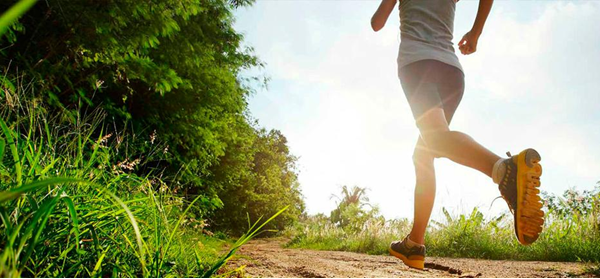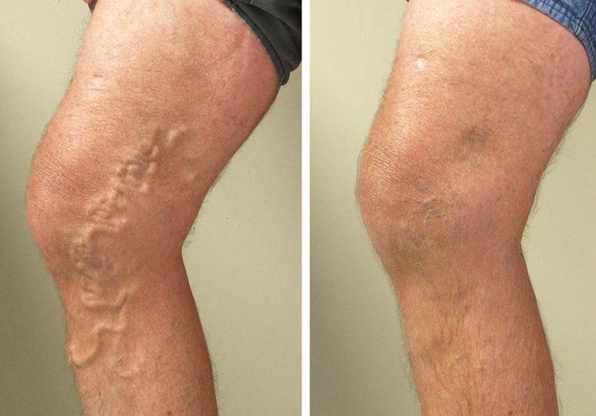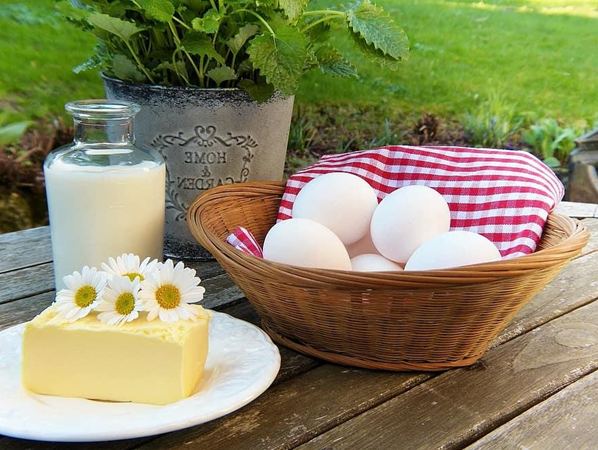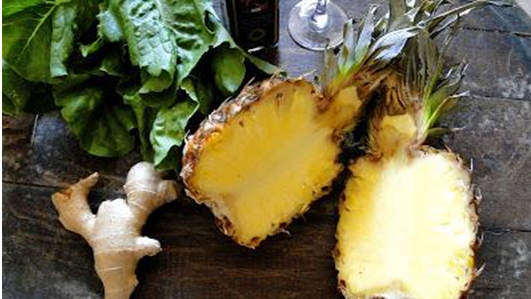Ayurvedic treatment of varicose veins (varicose veins)
Varicose veins or varicose veins, caused by weakened valves in the veins of the legs, refers to a condition in which the veins of the legs dilate, ie. look swollen and bulging and may differ below the surface of the skin.
Varicose veins may be dark in coloror retain their original color, ranging from light purple-red to almost dark blue. They are almost always painful. In the case of prolonged varicose veins, they may be accompanied by peeling of the skin and development of skin ulcers may be observed.
Varicose veins are caused by excessive pressure on the legs or abdomen. They are caused by age, obesity, pregnancy, hormonal changes and a number of other factors, which can includegenetic or epigenetic factors, as varicose veins are common in whole families.
Stagnation for long periods of timeincreases the pressure on the veins of the legs and promotes varicose veins.
Some deficiencies in the dietcan cause loss of elasticity of the veins, which can make them varicose. Prolonged standing, exercising, which puts more strain on the legs, wearing tight clothing and complete lack of exercise can lead to varicose veins.
Symptoms
In varicose veins, the veins appear dark blue or purple-red, swollen and bulging under the skin. Some people do not have any symptoms. Mild symptoms may include: heaviness, burning, aches, tiredness or pain in the legs.
Symptoms may worsen after long periods of immobility and include swelling of the legs and ankles and itching directly on the vein. More serious symptoms include:
- swelling of the legs,
- calf pain,
- skin changes, such as discoloration, dry, thinning skin, inflammation, scaling and open sores, or bleeding after a minor injury.
From the Ayurvedic point of view, varicose veins are a condition that involves the destruction of vata dosha (especially vana vayu) in rasa and rakta datus and extends into their upadhatus. Therefore, treatment efforts are aimed at soothing vata dosha and may include dietary, medicinal, yogic, and other measures.
Diet
In general, and with respect to the client's constitution, a soothing diet regimen is usually applied. Such a diet should include whole grains, at the expense of processed. Of the whole grains, wheat and millet are especially useful.
Fresh fruits are very necessary, because vitamin C deficiency is a major factor contributing to the appearance of varicose veins. Amalaki and other citrus fruits with high content of this vitamin should be contained in good quantities.
The diet should be rich in protein and should include an egg and a glass of milk every day, along with legumes and other protein-rich foods (although red meat should be avoided). To help digestion with high protein intake, it is good to consume garlic, onions, ginger and pineapple daily, avoiding other spicy foods and spices, advises William Curson, professor and dean of the College of Institutional Development at Sai Ayurvedic College and Ayurvedic Health Center.
For non-vegetarians, fish should also be included in the daily diet.
Drink plenty of water– the dose is a minimum of 3 liters of water per day for an adult man with a moderate level of activity.
Yoga asanas and exercise
Useful poses include:
- Virasana (hero pose),
- Sarvangasana (shoulder stand, should be practiced for 10 minutes every day, if possible),
- Kapotsana (pigeon pose – alternative lying position),
- Bhujangasana; (cobra pose),
- Shavasana (corpse pose),
- Halasana (plow pose),
- Pavanmuktasana (posture to relieve wind).
It is especially useful for the client to lift his legs while lying on his back. This should be done 4 or more times a day for 20 minutes. Do exercises for the feet, moving them back and forth. Another useful exercise is to try to sign your name with leg movements.
Simple exercises such as walking, swimming, cycling and stretching your legs while sitting in a chair also help. Avoid overly vigorous exercises and take a short break after each exercise. Avoid bathing in too cold water.
Herbal medicines
Useful Ayurvedic herbs include Amalaki, Arjuna, Ashwagandha, Brahmi, Guduchi, Guggul and Shatavari – and most of all, despite the fact that it is not of Ayurvedic origin, HCSE (horse chestnut seed extract) taken in mouth as well as topical application.
Brahmi (Bacopa monnieri)
The local Indian herb Brahmiis probably the best Ayurvedic treatment for varicose veins. It provides the necessary nutrients for proper toning of the veins. Ayurveda prescribes Brahmi as the medicine of choice for the treatment of varicose veins.
It is necessary to take Brahmi for four weeks without interruption in order to feel the benefits of the treatment. (Dosage: 2 to 6 g per day). Brahmi (Bacopa monniera) is taken with some mineral supplements such as Jasad bhasma. This bhasma has three advantages »
- It is a rich source of the mineral zinc
- Helps to heal and clot the blood through the formation of collagen
- helps the concentration of vitamin E in the blood.
Other medicines commonly taken with Brahmi are Chandraprabha vati, Nagarjunabhra rasa and Punarnavadi guggulu,
Garlic (Allium sativum)
Among its many beneficial properties Garlic has an effect in the treatment of varicose veins. Garlic can break down the protein content in the body and distribute it evenly. This increases the supply of protein in the lower extremities. (Dosage: 6 to 15 g daily).
Ginger (Zingiber officinale)
Like garlic, ginger also breaks down and distributes protein in the body. (Dosage: 1.5 to 5 g per day).
Onions (Allium cepa)
Onions help to properly absorb and distribute protein in the human body. Gives inner strength. Eating a head of onion daily can help solve the problem of varicose veins permanently.
Horse chestnut extract (HCSE, Aesculus hippocastanum)
Horse chestnut extract is widely used in Europe for treatment of chronic venous insufficiency (CHF) and varicose veins. It has been repeatedly proven to reduce leg pain and improve blood circulation in people with this problem.
It is as effective as supportive stockings for removing fluids from the lower legs, and is a synergistic cardiovascular nutrient that improves your circulatory structure and function (Dosage is standardized to 50-100 mg twice daily).
A multi-herbal preparation is patented in India,sold under the name Pilex, but its availability outside India is limited.
There are some Ayurvedic oils that are available for topical application to seek temporary relief. These are Prasarini taila and Chandanabala taila. Maharaja oil (whose main vegetable ingredient is Shatavari) helps to be especially useful, as well as brahma oil and carrot seed essential oil (usually mixed with a little carrier oil). Sahacharadi oil is also said to be of great benefit.
Care should be taken never to massage with oil directly on the varicose veins, as this would increase the pressure on them. A simple application without exerting pressure is enough.
For external treatmentapply oils very carefully on the affected veins. Massage the affected leg, avoiding the vein – in the direction of the hair.
In addition to all of the above, to soothe vata dosha, for example,avoid stress, get a good night's sleep, and follow a regular daily routine. This will definitely help those suffering from varicose veins.






0 Comments